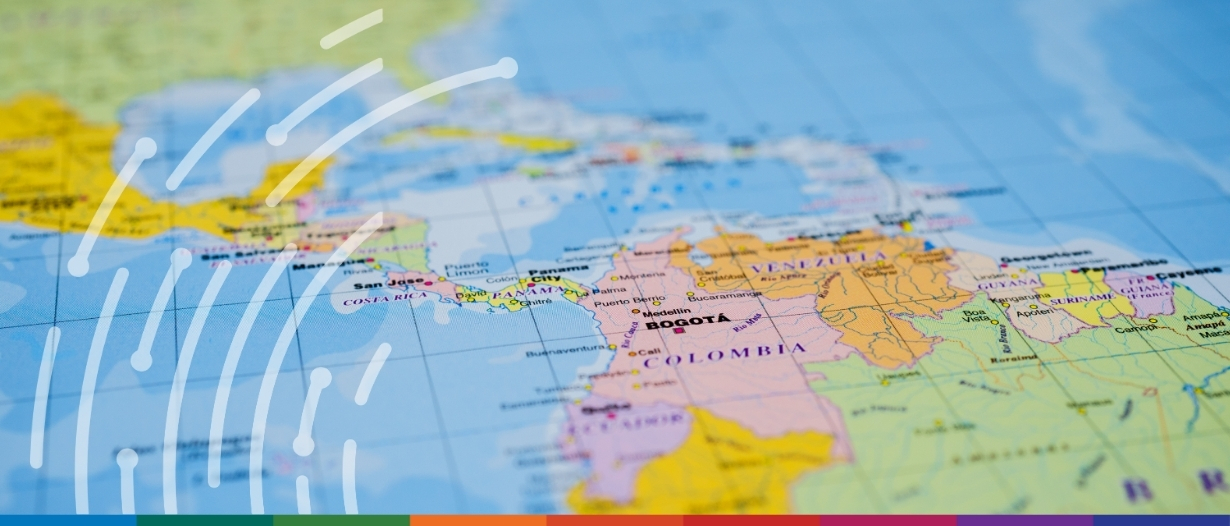Over the past two decades, China has grown increasingly interested in trade with Latin American countries, fuelled primarily by desire for the region’s natural resources.
While China’s ties to Latin America may go back centuries, its influence in the region has rapidly grown since 2001 when China entered into the World Trade Organisation. Political and economic ties were then quickly forged; social ties too, with large Chinese communities currently in Brazil, Cuba, Paraguay, Peru, and Venezuela.
Many leaders on the left in Latin American nations – such as Hugo Chávez in Venezuela, Lula da Silva in Brazil, and Evo Morales in Bolivia – were drawn into doing business with China, believing that it could reduce their reliance on trade markets with the United States.
The development of Sino-LatAm economic relations
According to Diana Roy of the Council on Foreign Relations, the think tank, the Chinese market accounted for less than just 2% of all exports from Latin America at the turn of the century. But with the commodities boom in the region, trade grew at a rapid annual rate of 31% over the subsequent eight years. Two years ago, the value of trade between the two parties totalled $450 billion.
China is now the second largest trade partner for Latin America, trailing only the United States. Regarding commodities, exports from Latin America to China are comprised mainly of copper, oil, soybeans, and petroleum.
Up to last year, 21 countries from the region have signed up to China’s Belt and Road Initiative, the Chinese government’s strategy to advance regional influence through trade and infrastructure initiatives. This is in addition to the free trade agreements between China and Chile, Costa Rica, Ecuador, and Peru.
Changing trade relationship
A recent report from the Boston University Global Development Policy Centre highlighted some shifting trends in the trade relationship between China and Latin America and the Caribbean (LAC).
In 2023, for the first time since China and LAC became major trade partners, beef has entered into being one of the top five export markets to China from the region.
This change has come around partially due to the falling prices in refined copper, alongside the doubling of the volume of beef trade.
The report highlights that LAC play a pivotal role in global trade for two key transition minerals—lithium carbonate, and copper ores and concentrates. Notably, half of the world’s trade in these unprocessed minerals is exported from LAC to China
Raw commodities continue to dominate LAC-China exports; when it comes Chinese investment manufacturing is the growing sector over the past 12 years, particularly in the automotive industry.
Dr Rebecca Ray, a senior academic researcher at the centre, reflected on the impact of trade finance relations between China and Latin America. “The answer is that China-Latin America trade finance has been a crucial stabiliser, particularly for China-Brazil trade, during years that have been characterised by a high and volatile price of the US dollar, and rising interest rates.”
Between 2019 and 2023, Brazil borrowed a total of $2.1 billion from China, the largest proportion of which went to trade finance. This is unsurprising since in major developing economies like these, dollar scarcity and sustainedly high interest rates significantly impede the ordinary flow of goods, services, and finances.
Alongside trade finance deals are China’s currency swap lines. International Monetary Fund (IMF) credits and regional financial arrangement are two components of the IMF’s Global Financial Safety Net (GFSN), intended to ease balance of payment problems that arise from market volatility; China’s currency swap lines fall within the GFSN.
Ray also noted the sectoral division of this trade relationship. “China-Latin America trade finance has not had specific sectors specified, but overall China-Latin America trade has been characterised by Latin American exports of commodities with very volatile prices.”
For example, soy prices have fallen by about one-third in the last two years, while beef prices have has lost and re-gained about 20% of their value from two years ago. The prices of Latin American minerals exports have been even more volatile.
This volatility is particularly significant because raw commodities constitute a larger proportion of Latin America’s export basket to China compared to its exports to the rest of the world. Consequently, global commodity price fluctuations introduce an additional layer of complexity to Latin America’s trade with China, underscoring the need for stabilising mechanisms such as trade finance.
Trump tariffs could hurt
Their proximity means any decisions in the US tend to reverberate strongly through Latin America. This effect is particularly strong with regards to tariffs or duties.
The US’ now president-elect Doland Trump has a fairly speculative outlook on China-Mexico relations. For one, he has previously suggested that China was using Mexico as a back door to the US during his first administration, to avoid the then trade restrictions in place. In this regard, he has publicly stated that Mexico serves as a ‘conduit’ for Chinese goods.
The auto industry is one sector that is well known to have caught the eye of Trump, who is happy to impose tariffs of higher than 200% on car imports from Mexico. Such measures would have a hugely damaging effect on car production plants.
The rules of the USMCA, the free trade agreement between the US, Mexico, and Canada, state that at least 75% of the content of passenger vehicles must originate in these three countries to be tariff-exempt.
Deutsche Bank has reviewed trade data and found that machinery, transportation, and metals are the sectors with the highest increase in exports from China to Mexico; and also the highest areas of export growth from Mexico to the US.
Looking at the 20 products with the highest increase in the nominal amount of exports from China to Mexico, the study found that many products related to the auto industry (such as cars, motor vehicles and accessories, delivery trucks, electric motors, etc.) were on the list. Similar patterns of high growth in these products arose when looking at exports from Mexico to the US.
Trump’s outlook on global trade has been categorised on a scale from hawkish to bigoted. But this Deutsche Bank study has given some validity to Trump’s complaints over the origin of Mexican imports in the car industry.
—
China is now the leading trading economy and the largest exporter country in the world, and the evolution of its interests in Latin America highlights how trade is strengthening its power around the globe.
Yet Trump’s second term in the White House and the possibility of 60% tariffs on Chinese imports, could have a ripple effect and not just on US and China trade relations. This is particularly true if a fall in the yuan is engineered, as is likely, potentially dragging so many other countries into trade restrictions.




























